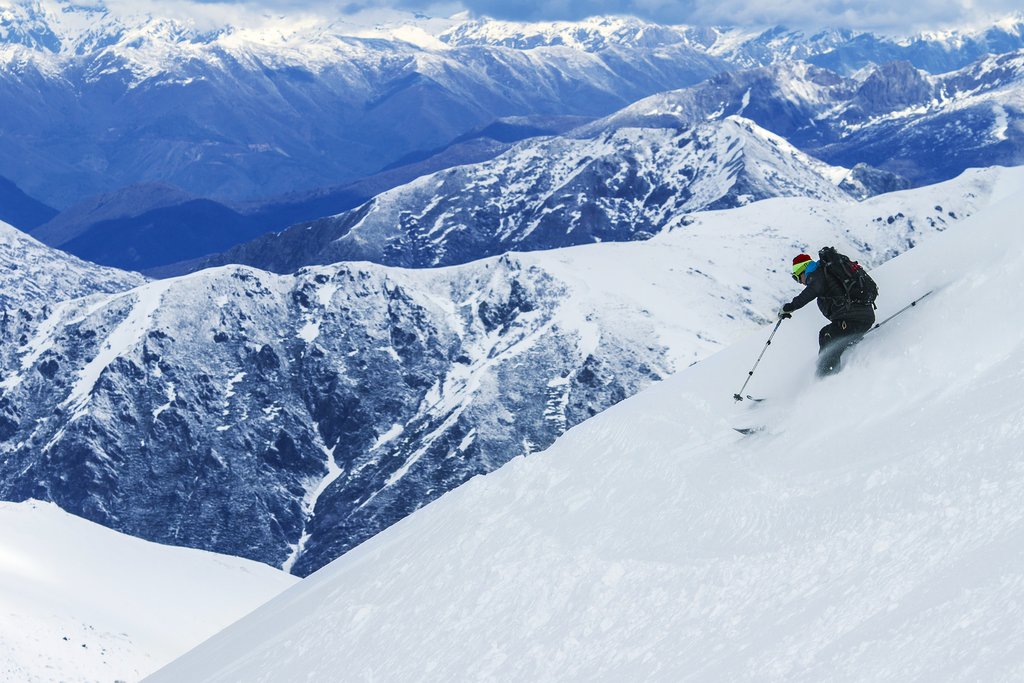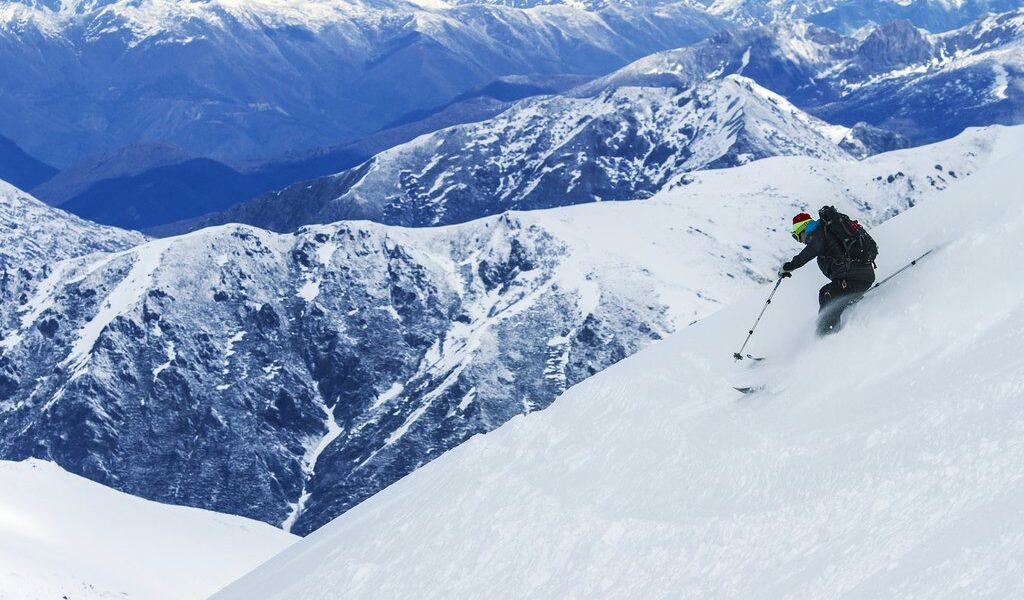
July is winter season in Patagonia, and that means ski resorts are open for business and local snow festivals are underway. Low tourist numbers and prices appeal to the adventurous (and those equipped with outdoor gear). Read on for more tips on where to go and what to expect in Patagonia this month.
Patagonia in July: A Comprehensive Travel Guide
## Weather in Patagonia During July
Let’s address the elephant in the room: July in Patagonia presents some challenging weather conditions. It unequivocally stands as the coldest and wettest month across the region. When venturing into the southern towns of Patagonia, expect temperatures to consistently linger in the 30s Fahrenheit. Journeying northward, you’ll find a slight reprieve, with daily high temperatures reaching the upper 40s Fahrenheit. However, it’s crucial to remember that Patagonia boasts a diverse landscape, giving rise to a multitude of microclimates. The specific weather you encounter will depend greatly on your precise location and, crucially, your altitude. Prepare for varied conditions as you traverse this vast and stunning territory. You might find that one valley experiences significantly different weather than a mountain pass only a few miles away. Be sure to check local forecasts regularly and pack layers to accommodate these shifts.
Beyond the numbers, the reality is that the Patagonian winter is not for the faint of heart. Expect frequent rainfall, particularly in the western areas, and the possibility of snow at higher elevations. The wind, while not as ferocious as during the summer months, can still be a factor, especially in exposed areas. Be prepared for all possibilities and come equipped with appropriate waterproof and windproof gear.
With the exception of dedicated snow sport enthusiasts who come for world-class skiing and snowboarding, Patagonia doesn’t typically feature prominently on the itineraries of most tourists during this time of year, predominantly due to the potentially harsh weather conditions. Compounding this is the significantly reduced number of daylight hours. This curtailment of daylight dramatically limits the scope and duration of outdoor activities, making it challenging to fully immerse yourself in the region’s renowned natural beauty. Sunrise occurs relatively late, and sunset comes early, leaving you with fewer hours to explore the mountains, glaciers, and trails that define Patagonia’s appeal.
## Crowds and Costs in Patagonia During July
The winter months, including July, generally witness the lowest influx of international visitors compared to the other seasons in Patagonia. However, a notable exception exists: mountain ski resorts. These resorts tend to be vibrant and bustling with skiers and snowboarders, particularly as Chilean and Argentinian families take advantage of their winter breaks. The slopes become a hub of activity, filled with the excitement of winter sports enthusiasts.
It is important to note that schools in Chile and Argentina often schedule week-long, half-term breaks during their winter terms. However, the exact dates for these breaks are determined independently by each school, leading to some variability. Consequently, planning your trip around these school holidays requires careful consideration. If you’re aiming to hit the slopes during these peak periods, be prepared for higher costs. This is undoubtedly a more expensive month to indulge in skiing and snowboarding due to the increased demand. Book accommodations and lift tickets well in advance to secure your spot and potentially mitigate some of the price increases.
Southern Patagonia, in contrast to the lively ski resorts, experiences a distinct absence of tourists during July. The combination of low temperatures, frequent rain, and shorter days serves as a significant deterrent, understandably discouraging many travelers. Moreover, many lodging establishments choose to close their doors for the season, leading to a reduced range of available accommodation options. Finding restaurants and other tourist services open can also be a challenge.
Nevertheless, those intrepid individuals who are willing to brave the challenges of Patagonia in July can be rewarded with breathtaking winter landscapes, often experienced without the infamous Patagonian wind that can be so prevalent during the summer months. The snow-covered mountains and pristine valleys present a unique and unforgettable beauty. However, it is crucial to prepare for limited transportation options and a reduced offering of tour services. Many roads may be impassable due to snow or ice, and guided tours may operate on a limited schedule or not at all. Careful planning and flexibility are essential for navigating Patagonia during this time.
## Where to Go in Patagonia During July
For travelers specifically drawn to the allure of snow sports, Patagonia offers a fantastic array of ski resorts, strategically located around Chile’s stunning Lake and Volcano District and within Argentina’s majestic southern Andes. These resorts benefit from consistently powdery conditions, providing an ideal environment for skiers and snowboarders of all skill levels.
In recent years, Argentina’s ski scene has been steadily gaining international recognition and press. Interestingly, it may offer a less crowded experience compared to Chile, which typically attracts a larger contingent of foreign visitors eager to hit the slopes. This potentially translates to shorter lift lines and more space on the runs.
While the options are plentiful, several Argentine resorts stand out as excellent choices. Chapelco, located near the picturesque town of San Martín de Los Andes, offers a diverse range of terrain suitable for both beginners and experienced skiers. La Hoya, another noteworthy option, is particularly well-regarded as an excellent choice for families, providing a safe and enjoyable environment for children to learn and practice.
Further south, near Ushuaia, the southernmost city in the world, lies Cerro Castor, a world-class ski area. Cerro Castor boasts stunning views, modern facilities, and reliable snow conditions, making it a top destination for serious skiers and snowboarders. It offers a unique experience, allowing you to ski at the very edge of the world.
## What to Do in Patagonia During July
July in Patagonia is undeniably the prime time of year to indulge in downhill and backcountry skiing in both Chile and Argentina. The snowy landscapes provide an ideal backdrop for these exhilarating activities. Following a day of exhilarating skiing, a number of relaxing options beckon, including luxurious spas, soothing geothermal hot springs, and comfortable accommodations in high-end resorts.
Active and experienced skiers seeking to experience the unparalleled thrill of climbing and skiing in Chile’s backcountry will discover abundant powder and a wide variety of on- and off-piste opportunities. These conditions attract both professional and amateur skiers from around the globe, eager to test their skills in this challenging and rewarding environment. Some specialized itineraries even incorporate hiking to the rim of volcanic craters with the guidance of experienced professionals. However, it is imperative to emphasize that this type of trip is strictly reserved for individuals in excellent physical condition with an advanced level of skiing proficiency. It requires significant endurance, technical skills, and experience in navigating challenging terrain.
For families seeking more moderate snow sports experiences, several family-friendly resorts can be found in other parts of Patagonia. Ushuaia, for example, serves as a great hub for moderate downhill slopes, Nordic skiing, and even dog sledding. These activities provide a fun and engaging way for families to experience the magic of winter in Patagonia.
## Events in July in Patagonia
Patagonia comes alive with vibrant celebrations and events during July, offering a unique glimpse into the local culture and spirit.
**Snow Festival in Bariloche:** This iconic event has become a beloved tradition in Argentina’s Bariloche. Its enduring popularity stems from two key factors: its suitability for the entire family, ensuring an enjoyable experience for all ages, and its ability to generate a sense of optimism and positive energy as winter sets in. The festival typically features snow sculptures, live music, and various winter-themed activities.
**National Nordic Ski and Biathlon Festival:** Held every July in Argentina’s Ushuaia, this national festival is perfectly suited for the entire family. The events are deliberately held on flat lands, minimizing physical risk and making it accessible to participants of all skill levels. It’s a great opportunity to witness and participate in the Nordic ski and biathlon culture.
**Fiesta de la Nieve (Snow Festival):** During the third or fourth week of July, the Snow Festival takes place in Puerto Williams. It is undoubtedly the most important festival of the year for the town, attracting the largest audiences. The festival encompasses a wide range of art and recreation activities, all centered around the theme of winter.
**Carnaval de Invierno (Winter Carnival):** For two days, the vibrant Winter Carnival is celebrated in the city of Punta Arenas at the beginning of the winter season. The festivities culminate on the banks of the Strait of Magellan with a spectacular fireworks display that promises to delight both adults and children.
**Día de la Independencia:** Argentina’s Independence Day is celebrated on July 9th, and festivities take place throughout Argentina to commemorate the day the country was granted independence in 1861. Expect parades, traditional music, and patriotic displays.
## Traveling to Patagonia in July? Consider This Itinerary.
Interested in experiencing Patagonia’s winter wonderland? Consider exploring a skiing adventure in Chile’s Lake and Volcano District.
## More Helpful Information for Planning Your Trip
For more information to help you plan your trip to Patagonia, you can look at resources pertaining to the months of June and August.
B-2009

